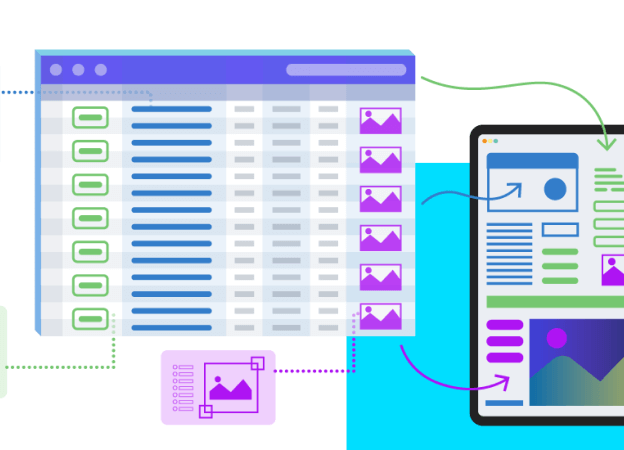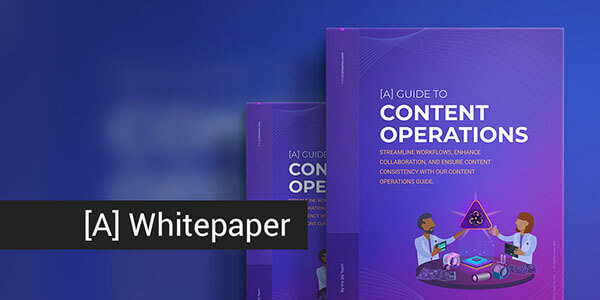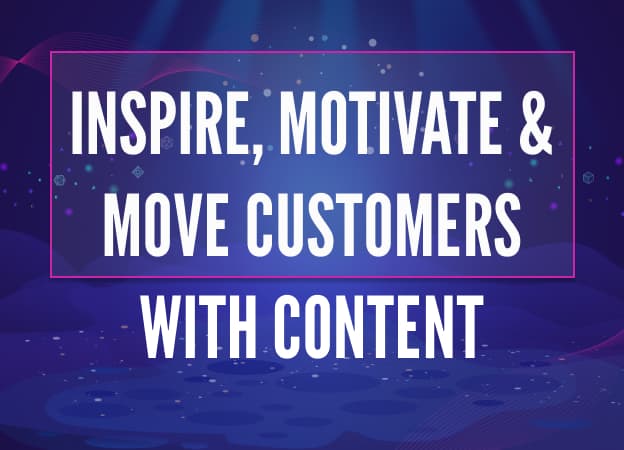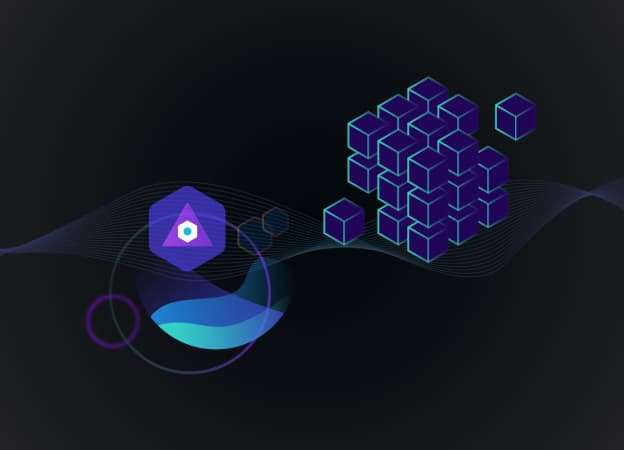Listen to customer data to match structured content with real-time, contextually relevant content.
Introduction
In our last article on “Structure and Semantics”, we concluded with this observation:
“Structured content, enhanced with semantics and metadata, empowers our content assets to decrease effective costs and deliver relevant content interactions to the right audience at the right time. The velocity of content throughput and distribution increases return-on-investment for pre-sales and/or post-sales content.”
While our previous articles have focused on the processes and models (e.g., the Core Content Model™ and the Master Semantic Model) to achieve intelligent content, this article focuses on Intelligent Customer Experience or ICX. It is based, in part, on the opening keynote talk at the Adobe DITAWORLD conference, delivered by Cruce Saunders of [A].
The future is already here
Back in 1999, David Bowie cast a clear-eyed vision for the content consumption world we live in today: “The actual context and the state of content is going to be so different to anything we can really envisage at the moment. Where the interplay between the user and the provider will be so in-simpatico, it’s going to crush our ideas of what mediums are all about. ... The idea that the piece of work is not finished until the audience come to it, and add their own interpretation, and what the piece of art is about is the gray space in the middle. That gray space in the middle is what the 21st century is going to be all about.”
Although Mr. Bowie spoke about this 20 years ago, today we find his vision proven correct: customer interaction data drives content interactions, and this changes everything.
Each day, we see glimpses of our organization’s future customer experiences. Those insights often come in our own interactions as consumers. We make purchases on Amazon from personalized suggestions. We find our room preferences proactively handled at a hotel based on previous stays. We receive emails with relevant product and media recommendations. And, more significantly, we find spot-on healthcare answers and recommendations across multiple interfaces.
Product and service consumption seems easier on almost a daily basis. As a customer, what does this experience feel like?
- I'm recognized as a customer.
- Useful things come to me without me having to seek them.
- I can move from content-type to content-type, from department to department, from subsidiary to subsidiary, and have a consistent experience.
- I still have my behavior understood and I always see a next best action or choice, even when I’m not logged into a website.
- Most of what I see is relevant to me and my interests.
All of these symptoms add up to an intelligent customer experience. Most significantly, what we described above has a marked lack of friction compared to older, more familiar customer experience methods.
The nature of content and content systems is rapidly changing before our eyes. The intersection between the old and new world of customer experience will shake up companies. The survivors will be the ones that embrace a content-centric approach and adopt practices for content consistency and scalability to fuel customer experiences.
The customer’s path of least resistance
Content professionals often recite the mantra, “delivering content to the right people, in the right way, at the right place, at the right time.” But how? The answer: structure and semantics. It is in these disciplines that we increase the fluidity of content and empower it to flow. Content is the energy that powers customer experiences. Fluid experiences live and breathe in fluid content.
Common sense and our own powers of observation confirm that customer attention naturally flows to easy, consistent, thoughtful experiences. Time, money, and focus all flow away from friction, towards a comfortable resting point. Customers just naturally flow with the current, along the path of least resistance.
Winners and losers on the customer journey
If we hark back 15 years ago, we can remember the zenith of Blockbuster, which was a worldwide force in video selection and distribution. At its peak in 2004, Blockbuster had more than 9,000 stores in the USA alone — it had become the primary destination for games and video. At that time, Blockbuster did not even have Netflix on its radar. Although Netflix had been around for 7 years at that point, it soon gained traction by removing just a few points of friction in the customer journey.
The Blockbuster experience required:
- Hearing about a film through catalog, an advertisement, or word of mouth
- Physically driving to the store
- Picking up a reserved disc or tape, or perusing titles by tilting your head to read tape or disc spines displayed sideways on shelves, like a library
- Making your selection
- Driving home to watch the film
- Driving back to Blockbuster later to return the film (often in a drop box, after hours)
The initial Netflix experience in the USA actually required more time than Blockbuster to get the film in hand, but with far less effort:
- Make your film selection online via website, and “get on the list” if your selection was a high demand film
- Receive your DVD via physical mail a few days later
- Watch the film, and return the disc via a postage-free cardboard mailer
Blockbuster waited too long to compete with this streamlined model. On the heels of the Great Recession of 2008, portable devices (smartphones and tablets) gained traction with falling prices for high bandwidth internet access. As a next logical step, Netflix moved to a “streaming” model, enabling portable viewing on multiple devices. Today, there is one final Blockbuster Video store on the planet: it is in Bend, Oregon, where it has become a thriving tourist destination.
Amazon is the “poster child” of friction-free customer journeys. Amazon would never have gotten to where they are today without the ability to contextualize customer experiences and remove friction from the entire customer lifecycle. They pioneered the concept of having their platform serve up the most logical “next best choice” based on customer context, location and behaviour. A credible product ratings/review system (including user-generated photos, good and bad) have mightily increased consumer confidence.
Where intelligence goes, the money flows
In the future, all customer money and effort will go towards personalized experiences. We are witnessing the gradual death of static, compiled, siloed websites. The old ways of content delivery are fading in favor of personalization, conversational interaction, recommendation engines, proactive service experiences, high-touch premium services, and seamless handoffs from channel to channel.
Many of us still operate under the fallacy (based on old workflow habits) that the customer experience is somehow separated from the content experience. The new reality is that content has quietly become the core business driver for the future of almost all organizations. Many companies would not exist without the content that flows through them. The manner in which our customers interact with us will be entirely met by content. In the dawn of this new customer experience era, where customers rule, we cannot make customers dig through an endless series of subdomains and subdirectories hunting and pecking trying to get to the right answer or the right product. Customers have to be able to work with us in a conversational way.
Content must be created and structured so that the customer intent and the content response meet in real time. This is the beating heart of ICX. The content IS the customer experience, and in many cases, the content is becoming the product itself.
What is ICX?
The organizations leading the way are very intentionally creating “Intelligent Customer Experiences.” [A] defines this concept as follows: Intelligent Customer Experiences (ICX) are uniquely assembled interactions between an organization and a customer. In an ICX, the content responds to the customer’s individual context and intent. With ICX, organizations automatically form adaptive relationships by listening to customer data and responding with contextually relevant content in real time. These new-era experiences deliver meaningful and useful content across channels, reducing the manual effort and transaction friction for consumers. ICX has 5 characteristics:
- Omnichannel - Assembling content modules into orchestrated, unique customer experiences across multiple channels, platforms, and devices.
- Contextual - Listening to and understanding a customer’s context and making that customer data available to real-time sessions. Bringing together relevant modular content from a content pool to meet customers in their required formats and views.
- Fluid - Flowing across a complete content supply chain and a Customer Experience (CX) and martech software stack, and into multiple interfaces and renderings with minimal rework.
- Automated - Responding using conditional logic to facilitate instant and long-term customer journeys, without human intervention. Connecting with robot consumers of structured data.
- Conversational - Connecting with customers via intent and response interactions, including chatbots and voice interfaces, facilitated by a combination of human and machine intelligence.
Intelligent content cannot reasonably be separated from intelligent customer experience. The essential ingredient to all customer experience is content. Thus, content problems impact customer experience. As a result, modern customer experiences will increasingly rely on structured, intelligent content.
Why personalized experiences must be assembled
In the traditional approach employed across many digital experience teams today, content gets crafted as ‘pages’ or ‘interfaces,’ and delivered to a single endpoint. In the new era of ICX, content must perform work across more than just one page, interface, or customer interaction.
We need to craft leverageable systems of content portability, so that enterprise leaders can activate many experiences out of one content pool.
To assemble an intelligent customer experience, we bring together modules of structured content into different representations. As illustrated below, a product and its related descriptions can (and must) be assembled into many variegated outputs.
First, we need to get to a basic structure for reuse. Then, beyond simpler presentation variation, comes the more advanced contextual personalization of content. Personalization depends on structured content being made available to meet real-time customer context data.
The Core Content Model™ (CCM) improves flow
The Core Content Model™ is perhaps the most effective methodology for content transformations between different representations across our content life cycle. (For full definitions, consult “[A] Guide to Mastering the Core Content Model™”). The guiding principle to remember is that the CCM is a content model for customer experience (CX), not just for website content.
The CCM is used to manage content across the planning, authoring, and publishing management parts of the life cycle. We need model usage that allows us to combine explicit content and metadata content across different systems of record and presentation templates. Thus, we express content through assemblies where pieces of content render in unique combinations across channels, journey stages, and various states of customer interaction.
Getting started towards smarter customer interactions
Step 1 - Start with a vision for the future of customer experience
Get stakeholders together that are responsible for customer experience. Look at content as the connective tissue that binds everybody together. Workshop together to build a vision. If there is no head of omnichannel nor a head of CX, the process can start with a “center of excellence” or even a simple ad-hoc steering group. Form a vision for what responsive experiences look like in the form of an updated customer journey map. Start with a narrow, focused objective, such as making a conversion process more contextual for customers. This objective can become an organization’s “North Star” for guidance.
Step 2 - Understand the content ecosystem
Map the content process today, and where it needs to go. Assess talent, bandwidth, and capabilities. Document how things get done, and understand that gaps exist. Underestimating the skill or amount of work required creating content assets is a common oversight. Look at the roles and talent in house. Get the ball rolling: there are a lot of training opportunities available.
Know the content: Companies that understand the customer journey, and map content assets to it have insights that most competitors do not possess. Using customer insight to ease customer engagement with our organization is the essence of being experience-led and customer-centered.
Step 3 - Build for content orchestration
Develop structural and semantics standards and share them. We need to build a content model: it shows everyone the pieces and parts of content, the ‘modules’, that will be assembled for customers. Teams need to agree on a tagging system for the content modules. Some consider ‘semantics’ to be a fancy word, but basically we just need to agree on what we are going to call things. What do we call the parts of our customer journey? A shared tagging system helps everyone keep consistent. It also helps to define what the key milestones are in a customer journey or lifecycle; use those milestones to tag the content as well.
Step 4 - Upgrade and align content technology
Content technology goes far beyond CMS selection, it encompasses an entire ecosystem of tools and solutions. Integrate technology platforms and content templates to use the new internal standards for structure and semantics. Map context data to structured content using shared tags. Build personalization rules into content management and digital experience platforms. For detailed information on content technology landscape, consult the recorded webinar “Explore the CX Technology Landscape and Selection Process” listed in resources.
Step 5 - Update organization and operations
Build new patterns around content development and management to support the creation and use of content fragments. We need to invest in more than just technology, we need to invest in the people and processes too. Updating content operations takes intentional work, but it’s also a very natural process after the ICX vision, customer journey maps, and structure and semantics models exist. Content operations are just the actions organizations take to deliver intelligent content across channels in an organized way.
What is the overall goal?
To upgrade how an organization publishes content, start by structuring content and facilitating automated workflows around that structured content. Once we have the pieces in place, even in early forms, we can start to “present the right content, to the right people, in the right place, at the right time.” This creates whole new possibilities for our customers, making interactions more effortless and enjoyable. None of us want to become the next Blockbuster Video.
In closing, here’s a quote from Adobe CEO, Shantanu Narayen: “It used to be that products were the basis of differentiation, but not anymore. The fundamental challenge facing every business today is that people buy experiences, not products.”



